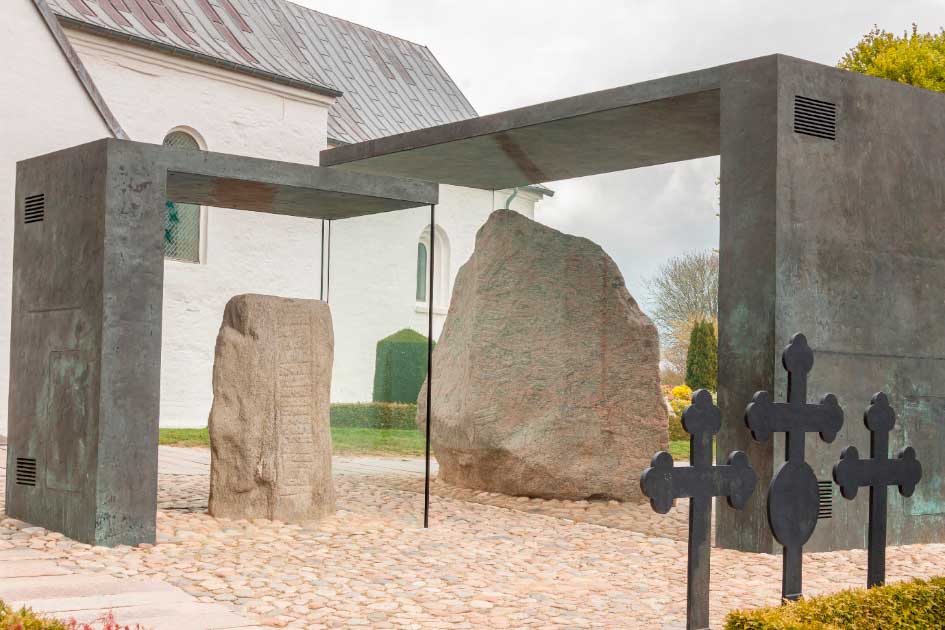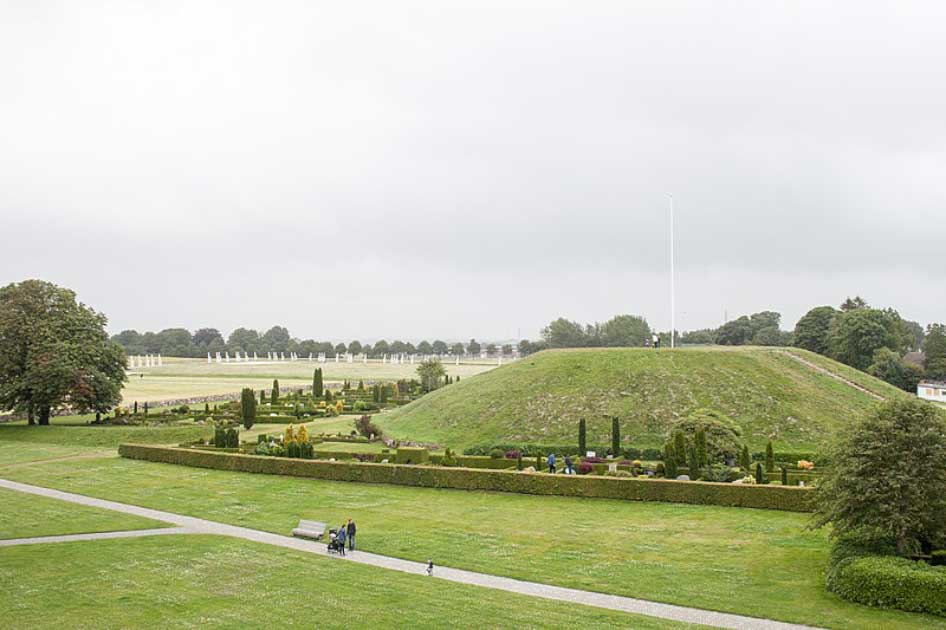King Gorm the Old of Denmark was a 10th century king, perhaps most famous today as the creator of the first of the two Jelling runestones, monolithic carved rocks, which served as a monument to his beloved wife Thyra.
Jelling is a location long associated with King Gorm, and for much of history his body was believed to be buried in Jelling, Denmark. However, after conducting numerous searches and excavations, his body has yet to be found on that site.
As his body is not found in the said location, some believe that the body of King Gorm was hidden or moved during the political conflict or unrest time. Others believe that his body may have been damaged or lost during many years of destruction and neglect that Jelling people faced, before the site was preserved and rediscovered in the 19th century.
If he is buried there, what happened to him and his tomb? And if he is not, how did Denmark misplace the body of one of their kings?
Who was King Gorm?
King Gorm was a long lived and powerful Danish monarch in the 10th century. He is known as one of the earliest Danish kings, founder of his own lineage and father of two kings: King Canute and King Harald Bluetooth. Likely born around the year 900 and crowned around age 30, he would outlive Canute and die at an advanced age, likely some time in his sixties.

Much of his reign was occupied with expanding his territories and conquering neighboring regions. King Gorm may have been the first Danish king who was engaged in military and political campaigns outside of his own kingdom.
As a result, he played an important role in shaping and developing the early Danish kingdom, but he achieved much on the domestic front as well. The construction of a huge burial mound in Jelling, considered to be a national symbol of the country, is one of his most visible achievements.
This mound was designed in memory of his wife, Queen Thyra, and was topped by an enormous carved runestone. Later his son Harald raised another stone on the same site dedicated to both his parents, implying that this is where Gorm was buried.
These massive stones are known as the testament to King Gorm’s ruling power, and it is a great example of Viking-era craftsmanship and art. However they were also a testament to the past, as Gorm was the Danish king who introduced Christianity to Denmark.
King Gorm converted to marry Queen Thyra, who was a Christian. She was the reason introduced a new era of religious and cultural exchange between Denmark and other parts of Europe.
King Gorm had created a legacy of other achievements, but he was not apart from controversy. He was said to be a ruthless and powerful ruler who used intimidation and violence to control over the Danish kingdom and maintain his power.
Apart from this, he is also remembered as a great visionary leader who played a great role in the foundation of the Danish nation and the Danish monarchy. He was an important figure in the history of Danish for his reign. Moreover, he was also known for creating much of symbolism which came to form the basis of the Danish cultural heritage and identity.
So, where is he?
A Missing Body and an Empty Tomb
King Gorm the Old would grow into a legendary figure in Danish history during his 20 year rule. Despite his significance, there remains a great deal of uncertainty surrounding King Gorm’s final resting place and the exact circumstances of his death.
According to tradition, King Gorm was buried in a large burial mound at Jelling, a site that has been identified as a royal burial ground for several generations of Danish monarchs. The Jelling Mounds, certainly seem like the logical location.
But there doesn’t seem to be a body buried in the Jelling mounds which could be King Gorm. Could it be that the archaeologists have yet to find him, or could there be some unknown reason for burying him elsewhere.
- Gundestrup Cauldron: Its Tale From the Balkans to Denmark
- Kensington Runestone: Made By Vikings or a Forger?
One of the reasons for the uncertainty surrounding King Gorm’s final resting place is the lack of historical records. The Vikings, who ruled Denmark during King Gorm’s time, were not known for keeping extensive records, and much of their history was passed down through oral tradition. This has made it difficult for historians to piece together a complete and accurate picture of King Gorm’s life and legacy.
Another factor contributing to the uncertainty is the fact that the Jelling Mounds have been disturbed and altered over the centuries. Archaeological excavations have revealed that the mounds have been modified and expanded multiple times over the centuries, and it is possible that King Gorm’s burial site may have been disturbed or destroyed during these processes.

Additionally, the Jelling Mounds have been subject to erosion and other natural processes over the centuries, which may have further obscured the location of King Gorm’s remains. If he was not buried deeply enough, he might simply have dissolved away.
Despite these challenges, however, historians and archaeologists continue to work to uncover the secrets of King Gorm and the Jelling Mounds. In recent years, new techniques and technologies have been developed that have allowed experts to gain a deeper understanding of the site and its history.
For example, ground-penetrating radar has been used to map the mounds and identify potential burial sites, and DNA analysis has been employed to try and determine the identities of the individuals buried in the mounds. Much has been learned about the early kings of Denmark from this data, but there is much to yet learn.
Despite the ongoing efforts to uncover the mysteries of King Gorm and the Jelling Mounds, it is likely that the exact location of his remains will remain uncertain for some time. However, the ongoing research and interest in the site is a testament to King Gorm’s significance in Danish history and the importance of preserving and studying the cultural heritage of Denmark.
But perhaps the major problem is that, if King Gorm is truly elsewhere awaiting discovery there is very little to go on which would offer a clue as to where that place is. Barring accident or chance, we may never find the body of King Gorm.
Top Image: The body of King Gorm, founder of Denmark, is not where it should be, but nobody knows where it is. Source: Art Gallery / Adobe Stock.
By Bipin Dimri